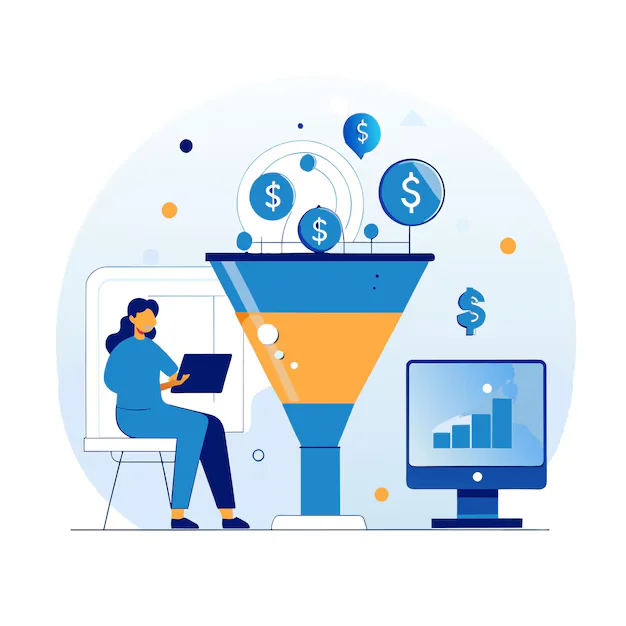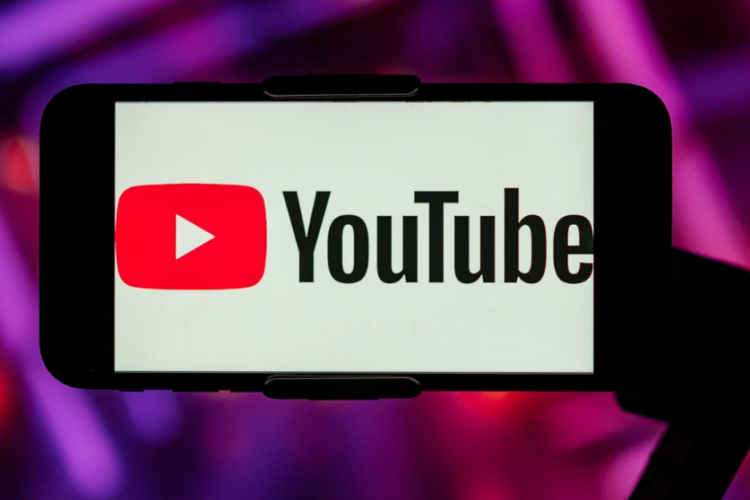
In today’s competitive business environment, mastering your sales funnel is crucial to increasing your conversions and growing your business. Whether you’re a B2B service provider, an e-commerce store, or a SaaS company, understanding the sales funnel stages can make a significant difference in your revenue. This guide will take you through what a sales funnel is, how to nurture leads through each stage, and how to optimize your funnel for maximum conversions.
What is a Sales Funnel?
A sales funnel is a model that visualizes the journey customers take from first becoming aware of your product or service to making a purchase. This journey is split into stages, often represented by a funnel shape, as the number of potential customers decreases as they move closer to conversion.
In simple terms, a sales funnel helps businesses understand where their customers are dropping off, allowing for targeted strategies to bring them back into the funnel.
The Stages of a Sales Funnel
A traditional digital marketing funnel is divided into three key stages:
- Awareness (Top of the Funnel): At this stage, potential customers are learning about your brand. Effective lead generation funnel strategies—such as content marketing, SEO, and paid ads—are essential to attract new prospects.
- Consideration (Middle of the Funnel): Here, leads are engaging with your brand, comparing it to others, and seeking information. This is where a strong content marketing funnel strategy comes into play, providing valuable resources like blogs, webinars, and case studies to nurture prospects.
- Decision (Bottom of the Funnel): The final stage of the marketing sales funnel is where leads decide whether to purchase your product or service. Conversion-focused tactics such as discounts, free trials, and clear calls-to-action (CTAs) are crucial here to move them toward purchase.
How to Move Leads Through Each Stage of the Funnel
Now that we’ve identified the stages, the challenge is how to move leads from the top to the bottom of your conversion funnel marketing strategy.
1. Building Awareness
At the top of the funnel, your goal is to attract as many leads as possible. To do this, you need to:
- Optimize for SEO: Use keywords relevant to your product or service to ensure potential customers find you easily in search engines.
- Leverage Social Media: Social media platforms allow you to engage with potential leads at the awareness stage by sharing content that resonates with your target audience.
- Run Paid Ads: Paid digital marketing campaigns can drive traffic to your website and are an effective part of the click funnel marketing strategy.
2. Nurturing Leads in the Consideration Stage
The middle of the funnel is where you need to build trust and show value. Some ways to nurture leads include:
- Email Marketing: Send personalized emails to engage prospects and guide them through the sales funnel stages.
- Content Marketing: Create blog posts, webinars, and case studies that provide solutions to your customers’ problems and highlight your product’s value.
- Retargeting Ads: Use retargeting campaigns to remind prospects about your offering, especially if they’ve engaged with your website but haven’t converted.
3. Converting Leads at the Bottom of the Funnel
The final step is turning leads into paying customers. Some tactics to achieve this include:
- Offer Incentives: Discounts, free trials, or bonuses can push prospects to make a decision at the decision stage.
- Simplify the Checkout Process: If you’re running an e-commerce or SaaS site, ensure your checkout or sign-up process is smooth and hassle-free. A complicated process can lead to abandoned carts.
- Social Proof: Use reviews, testimonials, or case studies to build trust and reduce hesitation.
Optimizing Your Sales Funnel for Higher Conversions
To increase conversion rate in your marketing sales funnel, optimization is key. Here’s how to do it:
1. Identifying Funnel Drop-Offs
Tools like Google Analytics and Hotjar can help you track where leads drop off at each stage of the funnel. By understanding these exit points, you can focus on improving those stages and bringing more leads toward conversion.
2. A/B Testing
A/B testing allows you to test different elements of your conversion funnel marketing—such as CTAs, landing pages, or even email subject lines—and see which versions perform better. This iterative process helps fine-tune your approach and drives more conversions.
3. Behavioral Analysis
Utilize heatmaps, session recordings, and customer surveys to get a deeper understanding of user behavior. You can learn how visitors interact with your pages and identify friction points that need to be addressed.
How to Qualify and Segment Your Leads
Not every lead is ready to buy immediately. To nurture leads effectively, it’s important to segment them according to their stage in the funnel and level of interest.
- Lead Qualification: Categorize leads as either Marketing-Qualified Leads (MQLs) or Sales-Qualified Leads (SQLs) based on their engagement and readiness to purchase. MQLs require further nurturing, while SQLs are closer to making a decision.
- Lead Segmentation: Segment leads based on their behaviors, interests, and demographics. This allows you to personalize your communications and deliver the right message at the right time.
Sales Funnel Examples for Different Businesses
To illustrate how funnels work in different industries, here are a few examples:
- Ecommerce Sales Funnel: Product discovery → product page views → add to cart → checkout → confirmation page. To avoid cart abandonment, offer incentives like free shipping or limited-time discounts.
- SaaS Sales Funnel: Website visit → product trial sign-up → engagement emails → paid subscription. Providing user education through email marketing and webinars can help move trial users toward becoming paying customers.
- B2B Lead Generation Funnel: Landing page visit → form submission → nurturing emails → demo request → purchase. In B2B, the sales cycle is longer, so building trust through value-driven content is key to conversion.
Best Practices to Improve Sales Funnel Conversion Rates
To increase conversion rate in your digital marketing funnel, consider these best practices:
- Create Clear CTAs: Every stage of the funnel should have a clear and compelling CTA to guide leads to the next step.
- Leverage Social Proof: Use testimonials, reviews, and case studies to build credibility and reduce friction at the decision stage.
- Implement Retargeting Campaigns: Bring back leads who left the funnel with retargeting ads on social media, email, and other channels.
Measuring Funnel Success and Continuous Improvement
Tracking your funnel’s success ensures you are moving in the right direction. Here are the key metrics to monitor:
- Conversion Rates: Track the percentage of leads that move from one stage to the next.
- Exit Rates: Identify where leads are dropping off and adjust your strategy accordingly.
- Customer Lifetime Value (CLV): Measure the long-term value of a customer to ensure your efforts are driving sustained growth.
Conclusion
A well-optimized sales funnel is essential for any business looking to turn prospects into paying customers. By understanding the sales funnel stages, nurturing leads through personalized content, and continuously optimizing each stage, you can increase conversion rates and drive sustainable growth.
Remember, a successful lead generation funnel is not about pushing customers through the funnel; it’s about guiding them with valuable content and experiences that meet their needs. Start optimizing your funnel today to see the difference it can make in your conversions.
Also read- Interactive Marketing Ideas for Engaging Audiences


